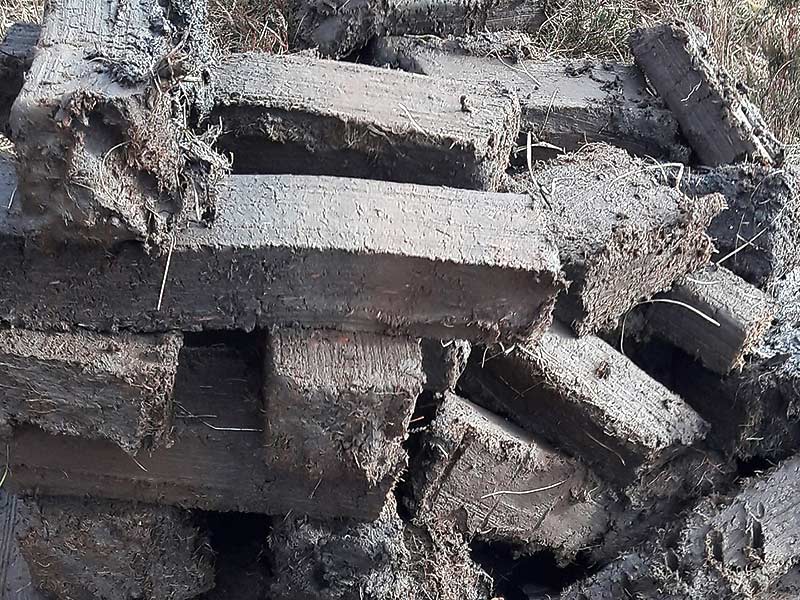Scotch Series 36: Peating

Hand cutting peats is the most environmentally friendly way for us to use this precious land to flavour our whiskies.
You slice off the top layer of grasses, heather, bog cotton and other plants, with a sharp flat spade, and place this layer on top of the raw exposed third layer that you cut down to last year. The size of this living clod maybe 8 inches deep by 12 inches by 12 inches. This living top layer melds into the bare layer and starts to rejuvenate the peat bank. (Not regenerate….! Peat banks only regenerate about 1 millimetre a month, this can hardly be called replacing – ONE centimetre a year! ) By doing this you are preserving the home of plants and animals who make their home on the peat moss. Small lizards, dragonflies, hen harriers who nest on the moss, still have their habitat, and Laphroaig distillery have their hand cut peat to flavour their malt.
The first layer of peats are cut once the top section has been removed. This layer of peat are good for peating barley malt as they do not provide much heat. This layer contains roots of heather and other vegetation which is not yet fully decomposed and compressed. Laphroaig don’t want heat in the fire, they want cool smoke. As long as this layer of peat is kept damp it will produce a cool, smokey fire. At the kilning stage of malting the different layers of peat are very important. Laphroaig want a cool smokey fire to flavour their barley. The other layers of peat are moist and heavy. Cutting them is like slicing through heavy butter. When these layers are dried they are very good for home fires as they produce a good heat.
